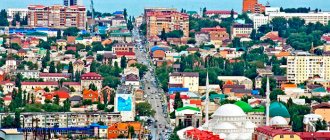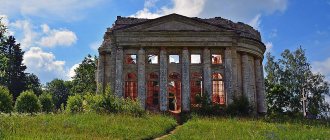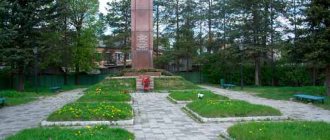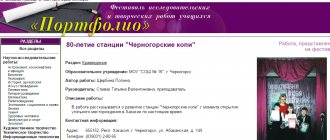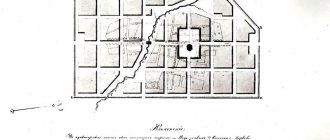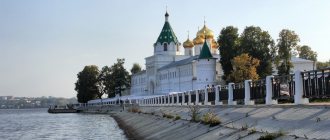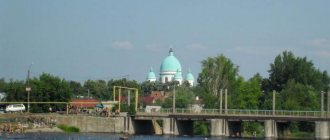Tulun is a city in the Irkutsk region, administrative ]Tulunsky district[/anchor].
Founded at the beginning of the 18th century.
City since 1927.
Area: 134 ± 1 km².
Population: 39,671 people (2020).
Nationalities: Russians (97%) and others.
Katoykonym: Tulunchane, Tulunchanin, Tulunchanka; Tuluntsy, Tulunets.
Time zone: UTC+8:00.
Telephone code: +7 39530.
Postal code: 665250.
OKATO code: 25 432.
OKTMO code: 25732000001.
Mayor: Yuri Vladimirovich Karikh.
Toponymy
Tulun is a word of Turkic origin. According to one of the existing versions, Tulun is translated as “leather bag”. The city received this name because of its location at the bend of the river, which goes around it and seems to take it in a bag.
This version is consonant with the information in the “Dictionary of Turkisms in the Russian Language,” published in 1976 under the editorship of Academician A.N. Kononova:
Tulun, metropolitan area, region (Sib.) skin removed with a pipe, entirely, without tearing lengthwise, tulunite, remove the skin with a tulun || leather fur, dressed and smoked for water (Orenb.), tzfsuk (Kavk.), wineskin (imoht.) (Dal, 4, 442). Experience, 1852 Tulun; from Mong. tulum (Sl. Acad., 1963, 15, 1116). “From Turkic, cf. tour. tulum 'skin' (Radlov, 3, 1470 et seq.)" (Vasmer, 4, 118). On tour. tulum 1. wineskin, 2. bagpipe (Magazanik, 1945, 629). Wed. tuluk and sheepskin coat.
Soviet specialist in the field of toponymy and cartography, Doctor of Geographical Sciences E.M. Pospelov in his monograph “Geographical Names of Russia” indicates that the word “tulun” comes from the Yakut “tolon” - valley.
ARTICLE 3 SVETLANA BAZHENOVA. TULUN - SECRETS OF THE OLD TOWN.
The cultural level of Tulun has always been quite high. Tulun gave the country the outstanding ethnographer G.S. Vinogradov, playwright Pavel Nilin, artist Viktor Khlebnikov, academician of the Academy of Cosmonautics Roald Kremnev and many other famous people. To this day, many original books and albums are published in Tulun; artists and photographers open their worlds to viewers. But even in ancient times it was a glorious city and life here was rich.
On one side, Tulun is crossed by the Trans-Siberian Railway, on the other, in the direction from south to north, the city is divided by the Iya River. Within the city limits, the river makes two sharp turns, forming a semi-ring, from which, according to one version, the city received its very unusual name (from the Buryat word consonant with “tulun”, meaning “bag”). There are also more poetic versions of the name: from the Yakut “tolon” - valley and the Turkic “tulun” - full moon to the Sanskrit “tule” - a secret place.
Toponyms also speak of their deep antiquity. In the Buryat language there is no translation of the names Eya, Iya, Khiyai, or Kholba (the Iya River in the Sayan Mountains originates precisely from the confluence of the Khiyai and Kholba rivers). This speaks of the antiquity and mystery of the birth of the name Iya. In Japanese there is a word “hiyai” which means the phrase: “a lot of time has passed since then; it was a long time ago,” another interpretation of this word is ひあい【悲哀】 (x and a y) - grief, sadness.
In the Tatar language, the word “iya” has two meanings: master, owner, possessor and myth, spirit. The morpheme “iya” is present in Tatar words translated as goblin, water goblin.
The female name Iya, according to linguists, has Greek roots and means “violet”. This is a very rare name, since it does not have a single consonant letter, therefore, enormous energy lies in the character of its owner. Iya is constantly full of emotions and experiences that she cannot contain. Well, it's very similar.
The combination “iya” has another amazing property: many geographical names in Russian end in “iya” - Germany, France, Japan, Holland, Sweden, Norway... This means one thing - that the name of our river is very ancient and very difficult. And it has nothing to do with Buryat history and culture.
The left bank of the Oya River is replete with evidence of the life of ancient tribes. In 1989, an archaeological survey of the Iya River valley and its tributaries from the village of Ikei to the village of Burkhun was carried out, which revealed 24 monuments dating from the Paleolithic to the Iron Age.
Ancient settlements on the Oya River
The Tulun land conceals incredible secrets in its depths. An analysis of archaeological finds in the Iya River valley suggests that people lived here a very long time ago, tens of thousands of years ago.
There is evidence of finds collected in the area of the village of Innokentyevsk in 1923 by the founder of the Irkutsk archaeological school, Bernhard Petri. In 1930–1931 In the vicinity of the villages of Gadalei and Badar, research was carried out by archaeologist and anthropologist Mikhail Gerasimov. In 1964, a group of students led by ethnographer and historian Vladimir Svinin along the bed of the Iya River to the village of Ilir identified 9 sites of primitive people (Mesolithic era). One of these sites, more than 10 thousand years old, was discovered on the eastern slope of Mount Paromnaya (village of Maly Kokuchey). Here, in the hollow of a ravine and pits, a large amount of crushed stone with traces of manual processing was found, a small core-core (Nucleus (core) - a piece of stone (silicon, obsidian, jasper or other rock), from which flakes or plates were chipped, pressed out for making tools or inserts for them. In the Mesolithic, cores often had the form of a pencil, on which the edges were formed by negatives from the chipping of plates; in the Neolithic, prismatic cores were more typical).
Neolithic sites were discovered above the railway bridge in the village of Innokentyevsk, also in the area of Uguy, near the village of Afanasyevo, on the banks of the Kurzanka River, in the villages of Porogi and Maly Kokuchey. A large amount of round-bottomed pottery with various ornaments, blanks of stone axes, scrapers, scrapers for woodworking, bones, stone arrowheads, knife-like plates, jewelry, and a bone harpoon were found.
There is only indirect evidence about the transitional time from the Stone to the Iron Age - the Bronze Age: pottery with an unusual ornament for the Neolithic, repeating the seams of bronze casting.
Iron Age monuments were discovered in the Yakimovka area, four kilometers from the village of Innokentyevsk, on the rocky outcrops of Mount Paromnaya near the village of Maly Kokuchey. Near the village of Burkhun, sites were discovered with the remains of flat-bottomed clay vessels, the remains of iron smelting in the form of slag, fragments of air-melting tubes, and the bones of domestic animals. In the Yakimovka area, on one of the rocky outcrops of the trap, a carved image of an idol was discovered: on a large stone about four meters high and about two meters wide, eyebrows, a nose, a mouth and a beard were polished with several chips. Another, no less interesting monument was discovered near the village of Maly Kokuchey: a schematic image of a shaman and an inscription in the ancient Turkic language.
There are more than 90 ancient monuments in the valley of the Oya River and its tributaries. In addition to hunting and household items, bones of pre-glacial animals were found: woolly rhinoceros, Siberian bull, mammoth tusks.
Paleolithic materials (choppers, scrapers, chips) were collected on the left bank of the Ikei River between the villages of Kharantey and Vladimirovka.
Stone products of Mesolithic appearance were collected at sites near Innokentyevsk, the railway bridge in Tulun, below the village of Nizhny Manut in the Smolokurnya area.
During excavation work and collection of lifting material at sites near the former village of Porogi, near the villages of Ikei, Gadalei, Innokentyevsk, archaeological finds were discovered: mesh and corded ceramics, decorated with ornaments, arrowheads, scrapers, piercings dating back to the Neolithic period.
Archaeological finds near the villages of Porogi, Ikei, Evdokimovo, Trakto-Kurzan (fragments of pottery, stone knives, scrapers) date back to the Bronze Age, Early Iron Age.
During the 1990 field season, 39 sites and one burial ground were discovered in the Kokucheyskie rapids - Ilir section. The burial ground was first discovered in the valley of the Iya River. It contained rich grave goods: bone pendants, beads, arrowheads, needle cases, adzes. Approximate age: four thousand years.
The history of Tulun began with the conquest
The history of Tulun, as evidenced by the records of local historians, began with the conquest. The Russians came to the area of the Iya River, where the Buryat herders originally lived, around 1652 from the Nizhneudinsky fort to punish the rebellious Buryats who refused to pay yasak. “In 1649, the Buryats were indignant and killed the Cossacks of the Pokrovsky town, sent to them for tribute collection. After this, “in great numbers” they gathered near the Iya River in the Tulam ulus with the intention of resisting the Russians by force. In 1652, the Krasnoyarsk governor Andrei Bunakov launched a campaign against the Buryats under the command of Kirill Bunakov. The campaign ended very successfully for the Russians.”
The first mention of Tulun dates back to 1735. The famous traveler and explorer John Georg, traveling through Siberia, left a mention in his travel notes about this locality: “On March 3, 1735, even before lunch, at 8 o’clock in the morning, we arrived from Udinsk to the village of Tulun, after driving through mostly sparse pine forest. This village lies on the Iya River, has 10 houses and is governed from Ilimsk.”
Sherstoboev V.N. in “Ilimskaya arable land” wrote this about Tulun: “The village of Tulunovskaya was part of the Ilimsk district in 1730–1743, but without any formalization of this by any decree. Just as imperceptibly it came under the jurisdiction of Ilimsk, just as imperceptibly it passed into the jurisdiction of Irkutsk, with which it was connected by a large road. Ilimsk, located 400 versts from the Tulunovskaya village, appointed clerks there only because the first inhabitants of this village came from the Ilimsk volosts.”
Black soil, the proximity of the taiga, a river rich in fish - all this attracted the Russians. The peasants who settled here seriously expanded their arable land, developing land around the village, began to build farmsteads and raced along the Krasnoyarsk-Irkutsk state road. Since the 30s. XVIII century Regular postal traffic is being created throughout Siberia. Coachmen are hired, and they receive not only money, but also arable land and hayfields for free use - a trade arises from feudal service. Postal service from Tomsk through Krasnoyarsk to Irkutsk was established by Vitus Bering. In 1762, the Moscow Highway passed through Tulun. The authorities, taking care of the development and arrangement of routes, forcibly populated the route from Krasnoyarsk to Tulun. For this purpose, peasants and commoners of the Krasnoyarsk and Yenisei districts, freeing them from paying poll taxes and quitrents, were enrolled as coachmen. Thanks to the highway, the village began to quickly build up and grow. A ferry crossing was established across the Iya River. The ferry worked around the clock - carts with goods moved along the route, soldiers walked, prisoners were driven away, mail and passenger carriages drove along.
Tulun is a city
Local historians write about old Tulun with pride: “Tulun is a city of extraordinary sincerity, its streets in a poplar snowstorm, wooden and stone mansions, the pattern of ancient buildings, houses built according to a joyful merchant whim, and most importantly - its old residents, the people who formed this city not only by pebble and log, but by his mental structure, by his inner moral essence.”
The decree of Catherine the Second of October 19, 1764, dividing the Siberian kingdom into two provinces, determined: “The end of the Tobolsk province and the beginning of Irkutsk in Tulun, from where pleasant and populated places, decorated with birch groves, will go to the provincial city.”
The Brockhaus and Efron encyclopedia says that in “the village of Tulun there are up to 7 thousand inhabitants, more than 70 trading establishments, with a turnover of over three million rubles a year” and that “economically, Tulun was far ahead of the city of Nizhneudinsk and became a prominent trading center, from which many goods are sent, bypassing Irkutsk, to the Angara and to the piers on the Lena River, for the needs of the Yakut region. Numerous parties of workers are sent this way to the Lena gold mines...”
Visitors and travelers needed somewhere to stop, rest, and eat. For these purposes, there were inns in Tulun; there were up to twenty of them. The most famous were the courts of Raspopin Fedor and Tatarnikov Georgy.
Gradually, trade began to actively develop in the village. Tulun entrepreneurs of that time often started commercial and industrial enterprises and even became merchants.
In some cases, merchants became large capitalists. Among the most famous and richest merchants are the owners of coal, flour milling and other enterprises P.K. Shchelkunov and Ya.I. Metelev.
P.K. Shchelkunov's father began small trade in 1853 in Tulun. In 1873, he entered into a company with a small merchant, also a former peasant, Ya. I. Metelev and organized. After the death of his father, P. K. Shchelkunov allocated his capital in 1899 and ran the business independently, organizing the trading enterprise “P. K. Shchelkunov and K” During the fire of 1922, Shchelkunov’s trading house and mill burned down. The brick building of the trading house and Metelev’s house have survived to this day: this is the building of the Babylon shopping center and a residential building on the street. Sovetskaya, 21.
In addition to the large merchants P.K. Shchelkunov, Ya.I. Metelev, there were smaller merchants such as Parushinsky, Kuznetsov, Sychevsky, Rzhansky (the last two had culinary shops), Boyarkins, Chudins, Parkhomenko, Murashov, Yampolsky and others.
The presence of a large amount of free labor during the Stolypin agrarian reform made it possible for Tulun merchants and entrepreneurs to replenish their enterprises with cheap labor, this contributed to the rapid development of agriculture, handicraft and handicraft production, and the development of trade.
Coachman S. F. Vinogradov (father of the future academician G. S. Vinogradov) recalled: “When I walked into Bolshaya Street for the first time, I looked and was amazed - Tulun is called a village, but who knows, maybe it’s a city? Every step is a store. Trading, "Kuznetsova-Buzolina", "Shchelkunova-Meteleva" and others. The building has two floors. The first ones are wooden, the other two are stone. In the large windows there are display cases with all kinds of goods, a fruit shop.” Semyon Fedorovich didn’t believe it and went in. In nature - fresh grapes, lemons, apples. “I couldn’t resist and asked: “Do you trade only in the summer?” - From what? - the owner was surprised. — You can buy fresh fruit from us at any time of the year. Come in, please.
In the Shchelkunov-Meteleva store, people disperse into departments: gastronomic, grocery, confectionery or meat. Then a wave of buyers carried me up a steep iron staircase into a gallery that encircled the entire second floor. Every department here contains different goods: coats, dresses, suits, textiles, carpets, furniture, shoes, gold items...”
At the beginning of December 1897, Tulun residents greeted the first train along the Trans-Siberian Railway. The village of Tulun becomes a railway point and turns into a busy center of trade. Peasants came to the village not only from nearby villages, but also from remote areas and various volosts of the Irkutsk province to buy industrial goods. Even the American International Reaping Machine Company opened its sales point in Tulun.
With the Trans-Siberian Railway a proletariat appeared in Tulun. The builders of the Tulun station remained: carpenters, joiners, blacksmiths and those who could serve on the railway. In 1903, the Tulun (Velistovsky) coal mines opened - the first industrial enterprise of old Tulun. In 1908, the mines were served by 90 people. In 1904, a vodka factory (Tulun Wine Warehouse) was built, where there was also a small working team. In addition, there was a sawmill, handicrafts were developed: blacksmithing, pottery, horse-drawn, soap-making and others.
With the beginning of the Stolypin reform, a resettlement site was opened at Tulun station. The hospital complex of this site still serves the population. From here, having received an appointment, settlers dispersed throughout the Tulun land, giving life to many villages and hamlets. The influx of cheap labor contributed to the rapid development of not only agriculture, but also handicraft, handicraft production, and trade.
Tulun was higher in its cultural level than other volost centers and villages of Nizhneudinsky district. In Tulun at the beginning of the 20th century. There was a men's school with five years of study, a women's school (now a museum building) and a railway school. Merchants opened their own private schools or became school trustees. This is how the private school of the merchant Metelev was opened (Stepan Razin St., 5 (now a music school)). Entrepreneur Mamaev opened a private school on Uspenskaya Street (now Krasnogo Oktyabrya, 7).
Through the efforts of Tulun intellectuals, Sunday schools for adults were organized and conversations were held on hygiene and sanitation.
In 1913, with the assistance of a native of Tulun, Georgy Semenovich Vinogradov (later an academician - a famous ethnographer and folklorist), a branch of the Society for the Study of Siberia and the Improvement of Its Life was opened here. In addition to Vinogradov, its members included: A. I. Zisman, A. M. Kubasov, doctor I. M. Butyrin, breeder V. E. Pisarev, teacher Popov, large entrepreneur Miney Yampolsky and others. A total of 270 people. The society existed on membership fees and donations. A rich library was created solely through donations; it contained 900 books, and by the end of 1914 there were already 1,209. The reading room was visited by 289 people in 1913, and 1,294 people in 1914. A museum was created. Members of this society held readings, lectures, and reports. The lectures of agronomist V. E. Pisarev, the founder of the Tulun breeding station, were especially appreciated.
All public life was conducted in the building of the merchant meeting (now the House of Children's Creativity). This building was built by Tulun merchants as a place for business meetings and entertainment; performances and concerts were staged here.
The society established and opened a museum, which then had departments: agriculture, ethnography, history, geology, paleontology, mineralogy, flora and fauna. Small hotels appeared.
The rapid development of Tulun and its transformation into a large commercial and industrial center of the Angara region forced the provincial authorities to petition the government to transform the village into a city. However, the revolution and the Civil War delayed the decision-making process.
The news of the February Revolution and the abdication of the Russian Emperor Nicholas II, received in Tulun on March 4–5, caused crowded rallies and demonstrations. Soviet power in the village was established in January 1918, but lasted relatively short-lived and was liquidated in July of the same year as a result of the mutiny of the Czechoslovak Expeditionary Force.
During the Kolchak period, a wide partisan movement, led by Nikolai Ananyevich Burlov, developed in the Tulun area. His partisan division had been stationed in the village for a long time. Guran, located 25 kilometers from Tulun, controlled a huge area from the village of Ikei to the Biryusa River. A cavalry squadron was created in the village of Guran, which was later reorganized into the 1st Soviet Tulun Cavalry Volunteer Regiment...
Soviet power in Tulun was restored in early 1920 with the arrival of the 5th Red Army. All the old measured life collapsed overnight: private schools were closed, a wave of repressions swept through, the wonderful building of the three-story brick store of Shchelkunov and Metelev with a rotunda on the roof on the street was blown up. Big. An attempt to blow up the Church of the Intercession of the Mother of God ended in failure: only the domes and part of the roof were destroyed. The residents of Tulun secretly dismantled the property of the church in order to preserve and prevent the ancient icons with precious frames from being desecrated.
The new government in Tulun opened its own school, workers' clubs, and red corners. Amateur organizations began to operate, a bathhouse, an outpatient clinic, a consultation, a cinema, a hotel, a military registration and enlistment office, and a railway club were built. MTS was opened in the temple that had lost its domes. Another milestone in the history of Tulun has begun.
Since 1899, the Tulun volost was part of the Nizhneudinsky district of the Irkutsk province. By decree of the All-Russian Central Executive Committee of July 27, 1922, the center of the district was moved from the city of Nizhneudinsk to the village of Tulun. Only in 1922 were documents received granting Tulun city status. But already in 1924, the new government deprived it of its city status and again began to consider it a village. The fact is that the Bolsheviks were always irritated by the rich and free Tulun; he was not a support for them, especially since during the NEP period “bourgeois” elements became more active here. Maintaining the status of a city for Tulun could significantly change the very fragile balance of political forces in the region in those years.
The 30s brought a new wave of repressions that completely changed the face of the city, its way of life and cultural level.
Geography
Tulun is located on the Iya River (Angara basin), on the Irkutsk-Cheremkhovo Plain, in the forest-steppe zone of the foothills of the Eastern Sayan. The territory of the city is a hilly plain formed by the erosion activity of the Ii River and its tributaries. The relief of the territory is determined mainly by weak erosional dissection of calmly lying Jurassic and Ordovician sedimentary rocks.
- Topographic map of square N-47-B (Nizhneudinsk, Tulun, Kuitun)
Sports[ | ]
In the city of Tulun, 9 sports are actively developing [ source not specified 1448 days
]:
- hockey. This sport is represented by the clubs DSK "Ugolyok", DSK "Olympiets", DSK "Start", SC "Khimik", SC "Shakhtar";
- football. This sport is represented by the clubs DSK "Ugolyok", FC "Gornyak", FC "Yunost", DSK "Start", FC "Lokomotiv";
- mini football. FC "Gornyak" is the winner and prize-winner of numerous regional competitions;
- boxing;
- powerlifting;
- freestyle wrestling;
- hand-to-hand combat, kickboxing.
- Athletics
- volleyball. VC “Shakhtar” is the winner and prize-winner of numerous regional competitions [ source not specified 1448 days
];
Climate
The climate of the Tulun region is sharply continental with cold, long winters and short, relatively hot summers. In any season of the year, sudden changes in weather are possible, a transition from heat to cold, sharp fluctuations in air temperature from month to month, from day to day and within 24 hours.
The average annual air temperature is negative (-2.4°C). The period with negative average monthly air temperatures lasts from October to April. January is the coldest month (its average monthly air temperature is 22.5°C). The absolute minimum was also observed in January - 55°C. Such low air temperatures are due to the strong cooling of the surface layer of air under conditions of predominance of anticyclonic weather in winter.
Media[ | ]
Local TV[ | ]
Analog broadcasting of mandatory public television and radio channels in the Irkutsk region was disabled on June 3, 2021
- Tulunsk television
- TV CENTER Tulun television
| Tvk | Frequency | Name |
| 27 | number | RTRS-1 (1 mp) |
| 35 | number | RTRS-2 (2 mp) |
Digital terrestrial television[ | ]
all 21 channels for the RTRS-1 and RTRS-2 multiplex; The package of radio channels includes: Vesti FM, Radio Mayak, Radio Russia/Irkutsk.
- The RTRS-1 TV channel package (TV channel 27, frequency 522 MHz) includes: Channel One, Russia-1 Irkutsk, Match TV, NTV, Channel Five, Russia K, Russia-24 Irkutsk, Karusel, OTR, TVC.
- The RTRS-2 TV channel package (TV channel 35, frequency 586 MHz) includes: REN TV, Spas, STS, Domashny, TV-3, Friday!, Zvezda, Mir, TNT, Muz-TV.
- Mandatory public regional television channels (“21st button”): television
Radio stations[ | ]
- Radio "MSM" 87.5 FM
- Radio "Tulun-FM" 103.4 FM
- Radio "EUROPE Plus" 91.6 FM
Transport accessibility
Tulun is located on the Trans-Siberian Railway and is a major transport hub. Within the city there are ESR stations Tulun and Nyura, as well as two stopping points. Federal highways “Baikal Krasnoyarsk - Irkutsk” and “Vitim” Tulun - Bratsk - Ust-Kut and then to Yakutsk pass through Tulun. The city is a junction of local roads that provide connections with populated areas in the region. The distance to the nearest large city of Bratsk is 225 km by road, to the regional center of Irkutsk - 389 km by rail and 428 km by road.
Criminal situation in the city. The city falls asleep, the mafia wakes up
It's no secret that everywhere there are their own influential groups. This system did not bypass the glorious city of Tulun. This can also be called its disadvantage. The districts are divided among influential people who run the local businesses. There are times when their importance goes beyond boundaries, and on the way to their goal or whim they spare no one.
Since the 90s, there have been terrible stories about the murders of Chinese businessmen, mass fights with visitors for spheres of influence, and arson of forest guards for the performance of their official duties. This is, of course, a thing of the past now. But in the evening it is better to behave carefully, especially if the person is alone. There have always existed, exist and will exist those people who are the bad link in society. You just need to stay away from them.
In general, the criminal situation in the city is at the level of all-Russian indicators. The city ranks lowest on the list when it comes to car thefts. The car can safely stand near the house, no one will touch it, this is a definite plus in comparison with the metropolis, where every night someone can encroach on their property.
Economy
Until the mid-1990s, Tulun was one of the industrialized cities in the region. Industrial production was the basis of the city's economy. The city's share in the total industrial output of the Irkutsk region exceeded 2%. Currently, due to the bankruptcy and liquidation of a number of enterprises, its production potential has declined catastrophically, and its share in the overall regional output of industrial products has fallen to 0.2% (based on the results of 2008 and 2009)7.
The largest enterprises in the city are the East Siberian Biotechnology Plant, created on the basis of a hydrolysis plant, and coal mines.
As of the first half of 2021, the following enterprises operated in Tulun:
• three enterprises providing electricity, gas and steam (Western Branch LLC, IP Styazhkin, IP Tryapitsyn);
• enterprise for the production of drinking mineral water (LLC “Beton”);
• enterprise for the production of other rubber products (IP Kiselyov);
• an enterprise for the production of other textile products (cotton work gloves, Rubin LLC);
• an enterprise for the production of plastic products used in construction (Kambiy LLC);
• four enterprises producing concrete products for use in construction (Concrete Corporation LLC, Energokompleks IKS LLC, Beton LLC, IP Silivanets);
• an enterprise for the production of seeds and seedlings of forest crops intended for forest restoration and the production of mulch from pine cones (Yenisei LLC).
• a plant for processing pine nuts, collecting and storing wild mushrooms, berries and herbs, producing and bottling drinking water, processing and packaging honey (Kedr LLC);
• enterprise for growing, collecting and processing herbs and wild plants (IP Poplevin);
• nine enterprises producing bread, bakery and confectionery products;
• a full-cycle enterprise from the development of design documentation for construction, reconstruction, major repairs of boiler houses, construction of modular boiler houses (Energokompleks LLC);
• production of wall house kits from rounded logs (construction of ecological and comfortable houses) Sibekodom LLC.
The trade and public catering network includes:
• 314 stores (66 food, 149 non-food, 99 department stores). Of the total number of department stores (with a mixed range of goods), food stores – 21%;
• 12 shopping complexes and centers;
• 60 non-stationary trade objects and 2 mobile trade objects;
• 58 public catering facilities (for 2,549 seats), of which 41 public catering facilities (cafes, bars, fast food) for 1,491 seats, 17 catering facilities in schools, colleges, and enterprises for 1,058 seats.
Large food retailers operate in the city - “KhlebSol”, “Economia”, “Svetofor”, “Khoroshiy”6.
Economics[ | ]
- Tulun is a major center of the timber industry[31].
- East Siberian Biotechnology Combine on the basis of a hydrolysis plant (the project is closed, production is planned to be organized in the Ust-Ilimsk region).
- Coal mines: Tulunsky, Mugunsky, Azeysky (Tulunsky is closed, Mugunsky and Azeysky continue to operate, extracting up to 25 thousand tons of coal per day during the active period.
- From 1963 to 2002, the Tulun Glass Factory operated.
Schools[ | ]
- MBOU "Secondary School No. 1";
- MBOU "Secondary School No. 2";
- MBOU "Secondary School No. 4";
- MBOU "Secondary School No. 6";
- MBOU "Secondary School No. 7";
- MBOU "Secondary School No. 19";
- MBOU "Secondary School No. 25";
- S(K)SHI No. 28
- MBOU "Gymnasium".
- MBOU secondary school "New Era"
Continuing education centers[ | ]
- TsRTDIU "Crystal".
Secondary vocational education[ | ]
- GBPOU "Tulun Agrarian College"; OGOI NPO Vocational School No. 4 (fourth department of the State Budgetary Educational Institution “Tulun Agrarian College”);
Population
Population dynamics of Tulun
| 1897 | 1926 | 1931 | 1939 | 1959 | 1967 | 1970 | 1973 | 1976 | 1979 |
| 2000 | 6000 | 7400 | 28 000 | 41 783 | 48 000 | 49 440 | 50 000 | 51 000 | 51 770 |
| 1982 | 1986 | 1987 | 1989 | 1992 | 1996 | 1998 | 2000 | 2001 | 2002 |
| 53 000 | 55 000 | 56 000 | 52 903 | 53 800 | 53 700 | 53 700 | 53 200 | 52 800 | 51 848 |
| 2003 | 2005 | 2006 | 2007 | 2008 | 2009 | 2010 | 2011 | 2012 | 2013 |
| 51 800 | 50 100 | 49 400 | 48 600 | 47 800 | 47 266 | 44 611 | 44 497 | 43 865 | 42 961 |
| 2014 | 2015 | 2016 | 2017 | 2018 | 2019 | 2020 | |||
| 42 336 | 42 029 | 41 987 | 41 671 | 41 640 | 41 279 | 39 671 |
Notes[ | ]
- ↑ 123
Population of the Russian Federation by municipalities as of January 1, 2021 (Russian). Date accessed: October 17, 2021. Archived October 17, 2021. - Results:: Irkutskstat (undefined)
(inaccessible link). Access date: April 10, 2014. Archived August 9, 2014. - Levashov E. A.
Geographical names. Adjectives, names of residents formed from them. Dictionary-reference book. - St. Petersburg: Dmitry Bulanin, 2000. - P. 518. - Gorodetskaya I. L., Levashov E. A.
Russian names of residents: Dictionary-reference book. - M.: Russian dictionaries, Astrel, AST, 2003. - P. 294. - Law of the Irkutsk region dated December 2, 2004 N 70-oz “On the status and boundaries of the municipal formation - “Tulun city” of the Irkutsk region”
- ↑ 12
City Charter - ↑ 1234
Duma of the city of Tulun: City - Tulun: history
- Gazette of the Supreme Soviet of the USSR. No. 29 (1013), 1960
- The number of dead and missing in the Irkutsk region has been announced
- ↑ 1 2 3 4 5 6 7 8 9 10 11 12 13 14 15 16 17 18
People's Encyclopedia “My City”.
Tulun (undefined)
. Retrieved July 2, 2014. Archived July 2, 2014. - All-Union Population Census of 1959. The size of the urban population of the RSFSR, its territorial units, urban settlements and urban areas by gender (Russian). Demoscope Weekly. Access date: September 25, 2013. Archived April 28, 2013.
- All-Union Population Census of 1970 The size of the urban population of the RSFSR, its territorial units, urban settlements and urban areas by gender. (Russian). Demoscope Weekly. Access date: September 25, 2013. Archived April 28, 2013.
- All-Union Population Census of 1979 The size of the urban population of the RSFSR, its territorial units, urban settlements and urban areas by gender. (Russian). Demoscope Weekly. Access date: September 25, 2013. Archived April 28, 2013.
- National Economy of the USSR 1922-1982 (Anniversary Statistical Yearbook)
- National economy of the USSR for 70 years: anniversary statistical yearbook: [arch. June 28, 2016] / USSR State Committee on Statistics. - Moscow: Finance and Statistics, 1987. - 766 p.
- All-Union population census of 1989. Urban population (undefined)
. Archived from the original on August 22, 2011. - All-Russian population census 2002. Volume. 1, table 4. Population of Russia, federal districts, constituent entities of the Russian Federation, districts, urban settlements, rural settlements - regional centers and rural settlements with a population of 3 thousand or more (unspecified)
. Archived from the original on February 3, 2012. - The size of the permanent population of the Russian Federation by cities, urban-type settlements and regions as of January 1, 2009 (unspecified)
. Retrieved January 2, 2014. Archived January 2, 2014. - Results of the 2010 All-Russian Population Census for the Irkutsk Region (unspecified)
. Retrieved September 23, 2013. Archived September 23, 2013. - ↑ 1 2
Population by municipalities as of January 1, 2012: stat.
Bulletin / Irkutskstat. – Irkutsk, 2012. – 81 p. (undefined)
. Retrieved September 24, 2021. Archived September 24, 2016. - Population of the Russian Federation by municipalities as of January 1, 2013. - M.: Federal State Statistics Service Rosstat, 2013. - 528 p. (Table 33. Population of urban districts, municipal districts, urban and rural settlements, urban settlements, rural settlements) (undefined)
. Retrieved November 16, 2013. Archived November 16, 2013. - Table 33. Population of the Russian Federation by municipalities as of January 1, 2014 (unspecified)
. Access date: August 2, 2014. Archived August 2, 2014. - Population of the Russian Federation by municipalities as of January 1, 2015 (unspecified)
. Access date: August 6, 2015. Archived August 6, 2015. - Population of the Russian Federation by municipalities as of January 1, 2021 (Russian) (October 5, 2018). Date accessed: May 15, 2021. Archived May 8, 2021.
- Population of the Russian Federation by municipalities as of January 1, 2021 (Russian) (July 31, 2017). Retrieved July 31, 2021. Archived July 31, 2021.
- Population of the Russian Federation by municipalities as of January 1, 2021 (Russian). Retrieved July 25, 2018. Archived July 26, 2021.
- Population of the Russian Federation by municipalities as of January 1, 2021 (Russian). Date accessed: July 31, 2019. Archived May 2, 2021.
- taking into account the cities of Crimea
- https://rosstat.gov.ru/storage/mediabank/bul_Chislen_nasel_MO-01-01-2021.rar Population of the Russian Federation by municipalities as of January 1, 2021 (1.85 Mb, 07/30/2021)
- Great Soviet Encyclopedia. Ch. ed. B. A. Vvedensky, 2nd ed. T. 43. Topsail - Fishing. 1956. 672 pp., ill. and maps; 51 l. ill. and cards.
Social sphere
Education
Municipal preschool education institutions as of 20206:
| № | Name | Telephone | Official site |
| 1 | Kindergarten "Alyonushka" | 40-420 4-91-15 | https://alenushka.tulunr.ru/ |
| 2 | Kindergarten "Antoshka" | 4-09-36 4-05-65 | https://antoshka.tulunr.ru |
| 3 | Kindergarten "Anyutka" | 4-09-48 | https://anutka.tulunr.ru |
| 4 | Child Development Center - Kindergarten "Harmony" | 2-96-49 | https://garmoniya.tulunr.ru |
| 5 | Child development center - kindergarten "Zhemchuzhinka" | 4-01-48 | https://jemchujinka.tulunr.ru |
| 6 | Kindergarten "Luchik" | 4-01-83 2-43-98 | https://luchik.tulunr.ru/ |
| 7 | Kindergarten "Malvina" | 2-10-33 | https://malvina.tulunr.ru/ |
| 8 | Kindergarten "Rainbow" | 2-03-61 | https://raduga.tulunr.ru |
| 9 | Combined kindergarten "Rodnichok" | 2-61-19 2-64-50 | https://tulunr.ru/rodnichok |
| 10 | Kindergarten "Firefly" | 2-97-65 | https://svetlyachok.tulunr.ru |
| 11 | Combined kindergarten "Teremok" | 2-51-66 | https://teremok.tulunr.ru |
| 12 | Kindergarten "Smile" | 4-02-84 | https://ulibka.tulunr.ru |
Municipal educational institutions as of 20206:
| № | Name | Telephone | Website |
| 1 | Secondary school No. 1 | 4-07-60 | https://pervograd.net/ |
| 2 | Secondary school No. 2 | 2-43-78 | https://sosh2.tulunr.ru/ |
| 3 | Secondary school No. 4 | 4-12-11 | https://sosh4.tulunr.ru/ |
| 4 | Secondary school No. 6 | 2-82-59 | https://sosh6.tulunr.ru |
| 5 | Secondary school No. 7 | 4-61-31 | https://sosh7.tulunr.ru/ |
| 6 | Secondary school No. 19 | 4-61-33 | https://sosh19.gtulun.ru |
| 7 | Secondary school No. 20 | 2-64-09 | https://sosh20.tulunr.ru |
| 8 | Secondary school No. 25 | 2-97-51 | https://sosh25.tulunr.ru |
| 9 | Gymnasium | 4-01-06 | https://gimn.tulunr.ru |
There is also a Center for Additional Education for Children and Youth “Crystal” (telephone: 4-11-07, website address: https://cristall.tulunr.ru).
Culture
- Siberia (leisure center)
- Prometheus (district palace of culture)
- “Leisya, song”, veterans’ choir
Content
- 1 Etymology and history
- 2 Geography 2.1 Transport
- 2.2 Climate
- 2.3 Relief
- 2.4 Geological structure
- 6.1 Schools
- 9.1 Local television
- 10.1 Mobile communications
Religion
The Church of the Intercession of the Mother of God in the city of Tulun was founded in 1740. In 1844, parishioners built a new church at their own expense, and the old one was renamed Assumption and remained until 1903, when, by order of the diocesan authorities, it was dismantled due to disrepair. In 1913, not far from the wooden one, a stone church of the same dedication was erected; the previous wooden one burned down in 1928. With the advent of Soviet power, the Church of the Intercession of the Mother of God was closed. From 1932 to 1944, the building housed workshops of a machine and tractor station, school workshops, a pioneer club, a branch of school No. 2, and a tannery. In December 1945, the building was returned to the believers, and on August 31, 1946, services resumed in the church. As of 2021, restoration work was underway in the Church of the Intercession of the Mother of God8. Address in Tulun: st. Sovetskaya, 19. Website: pokrovtulun.cerkov.ru/
Church of St. Nicholas the Wonderworker in the city of Tulun . Address in Tulun: st. Belova, 57. Website: nikola-tulun.cerkov.ru/
Authorities[ | ]
The structure of local government bodies of the city is [6]:
- Duma of the city district (City Duma) - the representative body of the municipal formation - “the city of Tulun”;
- Mayor of the urban district (mayor of the city) - head of the municipal entity - “Tulun city”;
- Administration of the urban district (city administration) - local administration of the municipality - “Tulun city”;
- The Chamber of Control and Accounts of the city district (the Chamber of Control and Accounts of the city) is the control and accounting body of the municipal formation - the “city of Tulun”.
Natives and residents
- Pavel Filippovich Nilin - Russian Soviet writer, playwright, screenwriter, winner of the Stalin Prize of the second degree (1941), lived and worked in Tulun in the 1920s. In 2008, on the initiative of the poet G. Gaida, a memorial plaque was installed in Tulun in honor of the writer Pavel Nilin.
- Angelina Mikhailovna Vovk is a popular Soviet TV presenter, born in Tulun.
- Evgeniy Danilyuk is an artist who lived in Tulun in 1970-80.
Notes
- Russian scientists have established the circumstances of the 2019 flood in Tulun // TASS. 2021. July 31
- Tulun. Flood anniversary // Regional newspaper. 2021. July 2.
- Tulun: life after the flood // Regional newspaper. 2021.10 July
- More than half of those affected by floods in the Angara region buy housing in their settlements // TASS. 2021. November 14
- The number of dead and missing in the Irkutsk region has been named // Lenta.Ru. 2021. July 2
- Administration of Tulun. Official site
- Tulun // Vinokurov M.A., Sukhodolov A.P. Cities of the Irkutsk region
- Church of the Intercession of the Mother of God in Tulun. Official site
Floods[ | ]
In 1984, there was a flood in the city; three hundred residential buildings were in the flood zone.
In June 2006, after almost a week of rain, the water level in the river rose significantly. Residential buildings located along the banks of the river, as well as a section of the federal highway R-255 and the bridge over the Tulunchik stream were flooded. One person became a victim of the disaster.
In 2007-2008, dams 2.5-3 meters high were built along the banks of the Iya River.
In June 2021, the water level in the Ie River began to rise again and on June 28 reached 1389 cm (critical level - 700 cm). The dams, filled several years earlier, were unable to protect residential buildings from flooding. In total, the water affected 887 houses, where 1,771 people lived.
As of July 9, the flood claimed the lives of 23 people, and another nine were reported missing[10].
- Satellite image of Tulun on June 19, 2021 before the flood
- Satellite image of Tulun on June 29, 2021 at the peak of the flood
